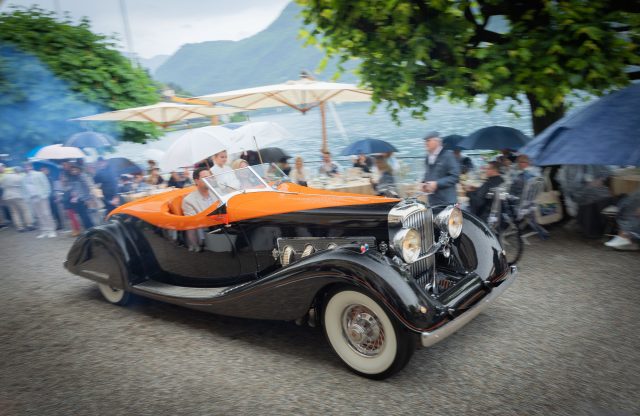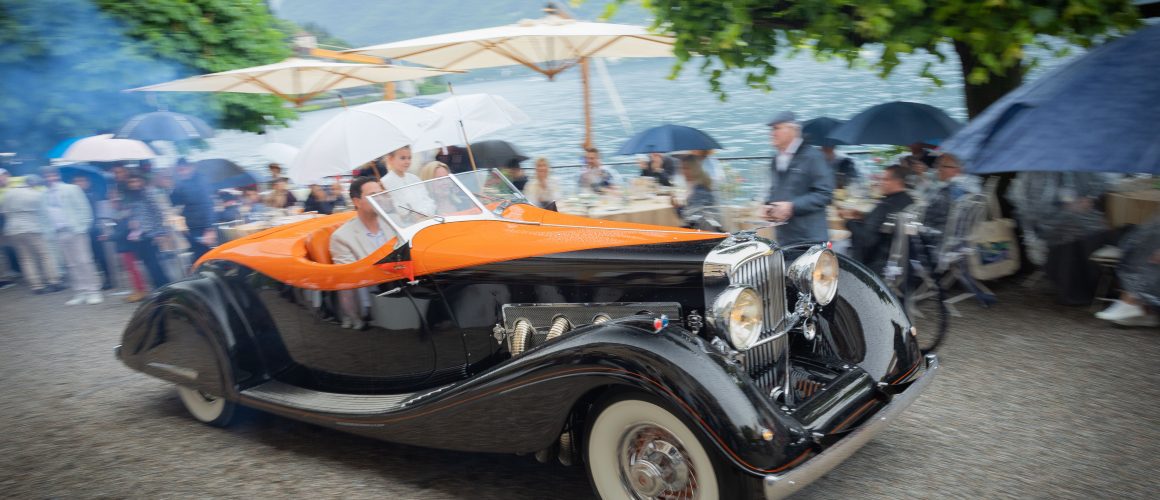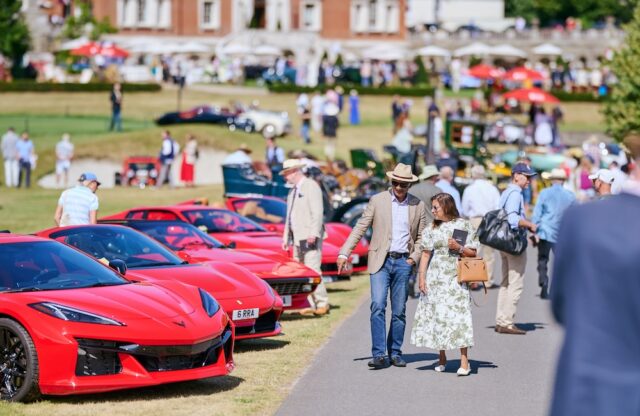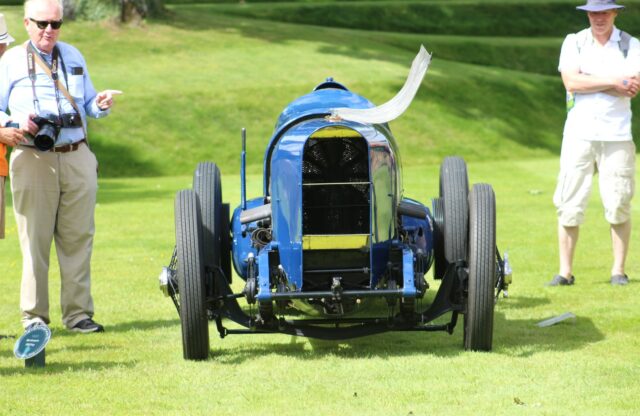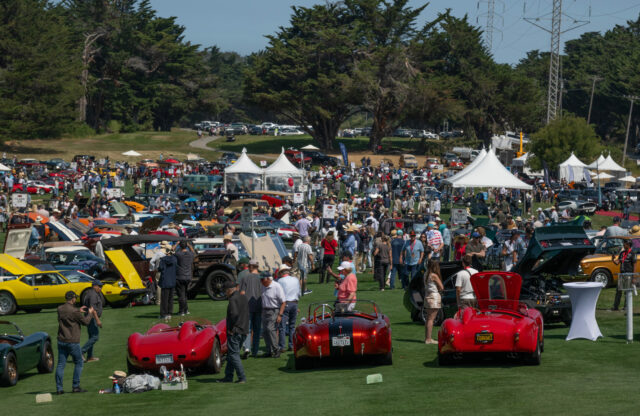Words: Nathan Chadwick | Photos: BMW & Gudrun Maschalla/Nathan Chadwick
Rain didn’t stop play as the Concorso d’Eleganza Villa d’Este returned on May 19-21, 2023. With much of northern Italy affected by horrific weather and floods – the Formula 1 race at Imola, a few hundred miles away, was cancelled – there was some doubt it would go ahead, but persistent drizzle didn’t stop the event from being much busier than last year.
There were two key themes – Porsche at 75 and the Le Mans 24 Hours at 100 – but there were also plenty of cars with a US connection, and ultimately the Trofeo BMW Group Best of Show by the Jury went to William Lyon’s Duesenberg SJ (main picture); an American automobile but with an Indian and British twist.
The last one of 36 built, it was given a Boattail Speedster body by John Gurney Nutting. Commissioned by Maharaja Holkar of Indore, it is 18ft long and features bespoke items such as wicker-wrapped steering wheel to cope with the humid Indian climate, two seats plus a hidden rumble seat, and two different sets of lights – blue for when the Maharajah’s wife was driving the car, and red for himself.
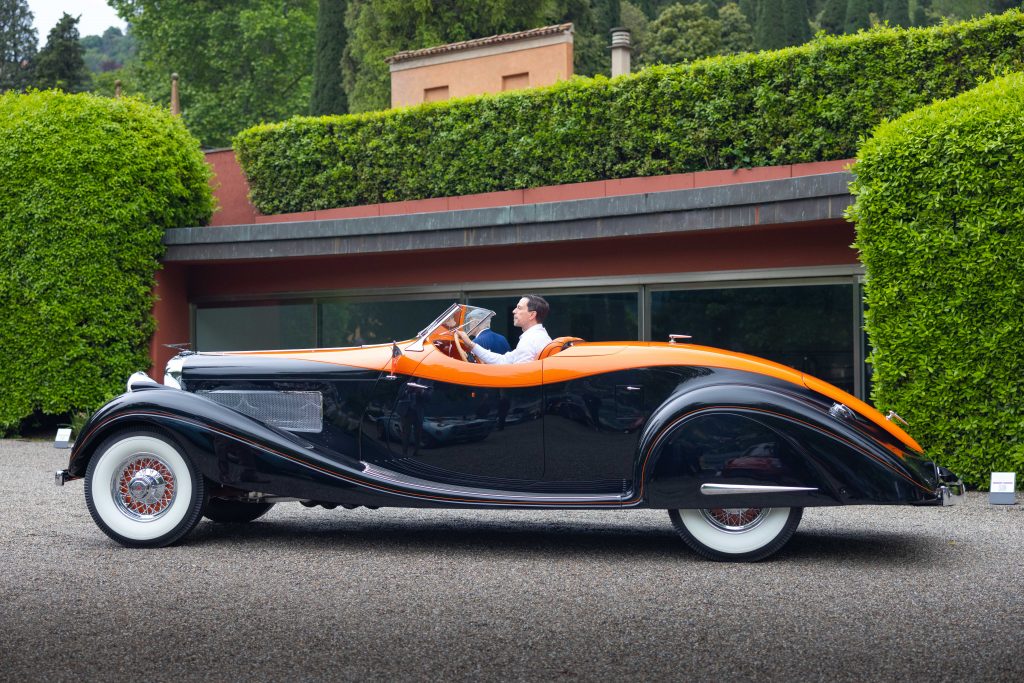
The Duesenberg made its debut at the 1936 London Motor Show, but rather than take it home to India, the then 28-year-old Maharaja had it shipped to California to avoid losing the car to the Japanese in the event of an invasion. He eventually had it delivered to India once the threat had receded.
The car made its way back to the US in 1959, when William Brewster of Connecticut bought it from Bollywood actor Sheikh Mukhtar in a deal believed to consist of six pairs of socks, three ties, four shirts, a Chevrolet Impala and some cash on top. Since the 1980s the Duesenberg been in the William Lyon Collection. At Villa d’Este, it also won Class C – Incredible India: The Dazzling Motoring Indulgences of the Mighty Maharajas.
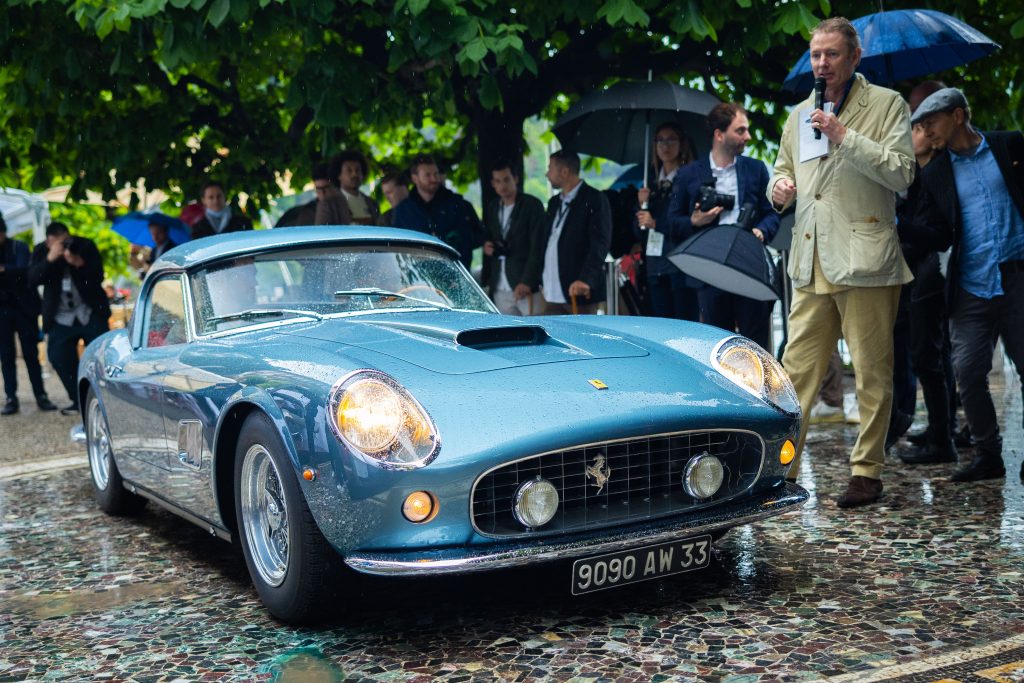
The Coppa d’Oro Villa d’Este – otherwise known as the Best of Show by Public Referendum – went to the Keybridge Collection’s 1961 Ferrari 250GT Spyder California. One of 55 Series 2 cars built, its first owner was French writer Françoise Sagan, who was no stranger to the Maranello-powered good life; she once stated: “Whisky, gambling and Ferraris are better than housework.” The car was shipped to the US in 1970, where it soon found itself wearing olive green paint and sporting the phrase ‘US Army Racing Team’ on its flanks. The car was restored in the late 1980s, and again in the early 2000s. It also won Class H in Italy – Here Comes the Sun: ‘Topless’ Done Differently.
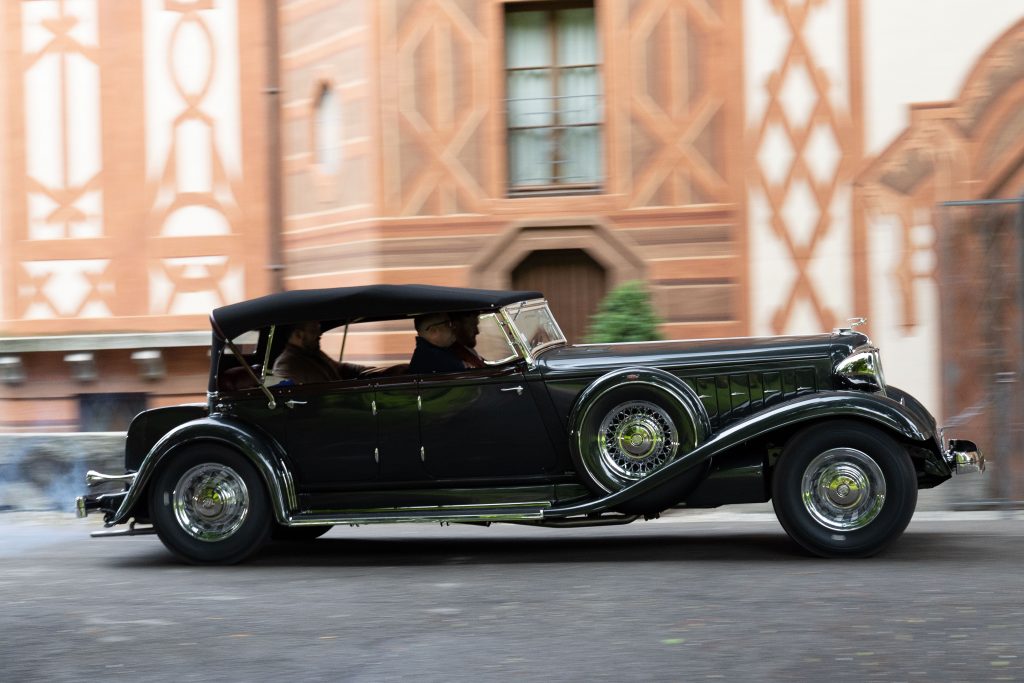
Class A (The Fast and the Formal: Pre-War High-Speed Luxury) went to William Boyd Smith Jr’s 1933 Chrysler Custom Imperial CL Convertible Sedan. One of 50 Imperial CLs built, and one of 32 wearing the more modern front end from 1933, this car retains it original engine and body, and has been treated to a refurbishment that took more than 10,000 hours. A fair proportion of that time was spent tracking down the history and the correct materials – finding the correct shade of paint (Moonglow) was achieved with a tiny remnant of the original paint after more than a dozen attempts.
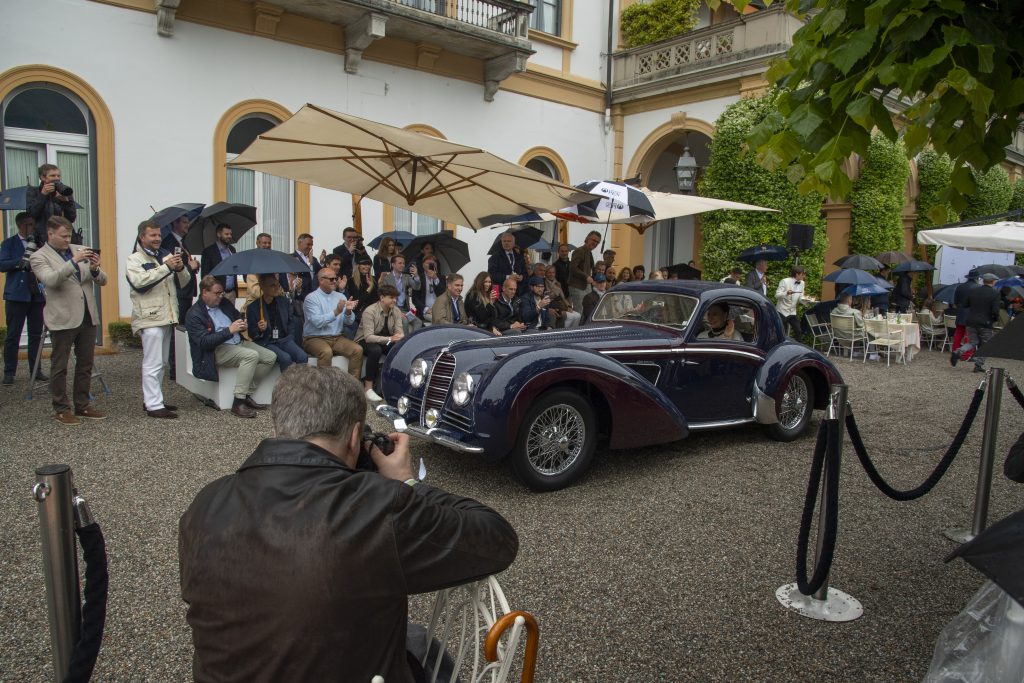
This 1938 Delahaye Type 145 V12 Coupé, owned by Peter and Merle Mullin, won Class B: Grande Vitesse: Pre-War Weekend Racers. The Ecurie Bleue team ran four such cars between 1937 and 1939, and this was the second built. It was put into storage until World War Two ceased, and was bought by the Modern Transport Company’s Robert Cuny. He would later sell it to Fernard Lacour two years later, who despatched it to Henri Chapron for a two-door, two-seat Grand Luxe Coupé body.
It was finally finished in 1948, although not before it had been fitted with a Type 165 engine sporting a racing-honed three-carburettor set-up. Fritz Schlumpf found out about the car and acquired it for his private collection in France. Eventually, the V12 developed a fault, so it was replaced with a six-cylinder Delahaye unit. In 1983, Bill Jacobs Junior bought the car and reunited it with its original engine during its first restoration. It joined the Mullin Collection in 2003, whereupon it was restored again.
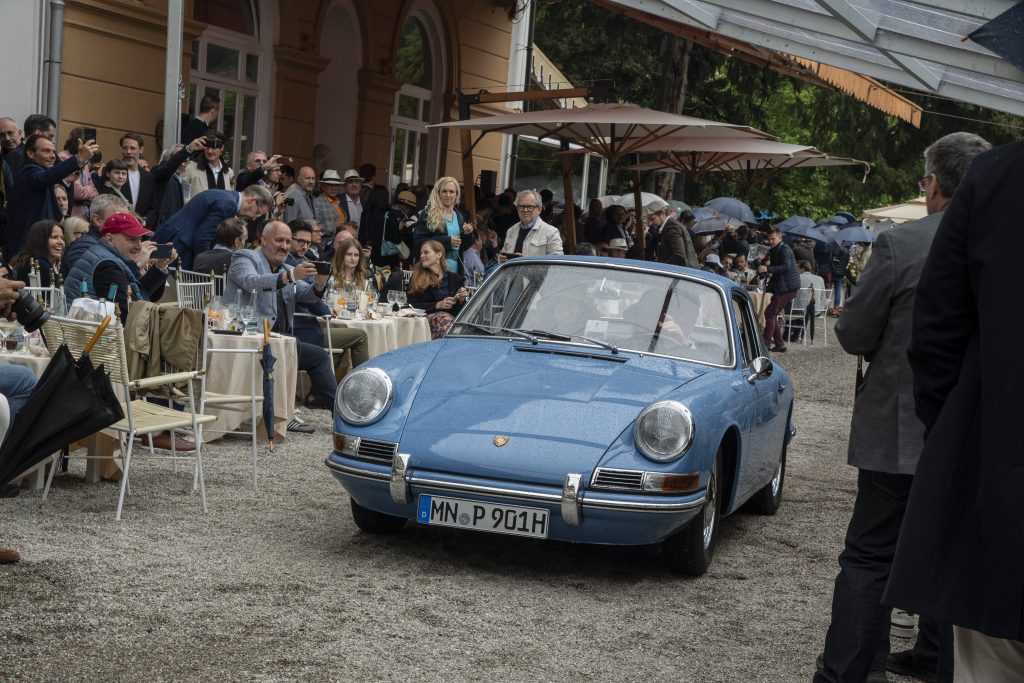
Class D, entitled Porsche at 75: Delving Into the Stuttgart Legend’s Iconic and Eccentric Back Catalogue, went to what’s believed to be the oldest Porsche 901/911 prototype still in existence. This 901 – one of around 100 cars built before a trademark-infringement dispute with Peugeot necessitated the use of the 911 name – is one 13 test cars bequeathed exotic names when new. Although the names usually referenced birds, butterflies and bats, this car was called ‘Quickblau’. It closely resembles the final production version – the dashboard features five dials, while earlier prototypes didn’t. Porsche’s then head of engine development, Ferdinand Piëch, used the 901 extensively for testing, and it saw more work from the likes of Hans Mezger and Walter Vetter.
Alois Ruf acquired the car in 1968, and has owned it ever since. It was comprehensively rebuilt in 1971 following a serious accident, and more recently it was treated to a frame-up restoration between 2020 and 2022. It also won the Trofeo Vranken-Pommery for the best iconic car by the jury.
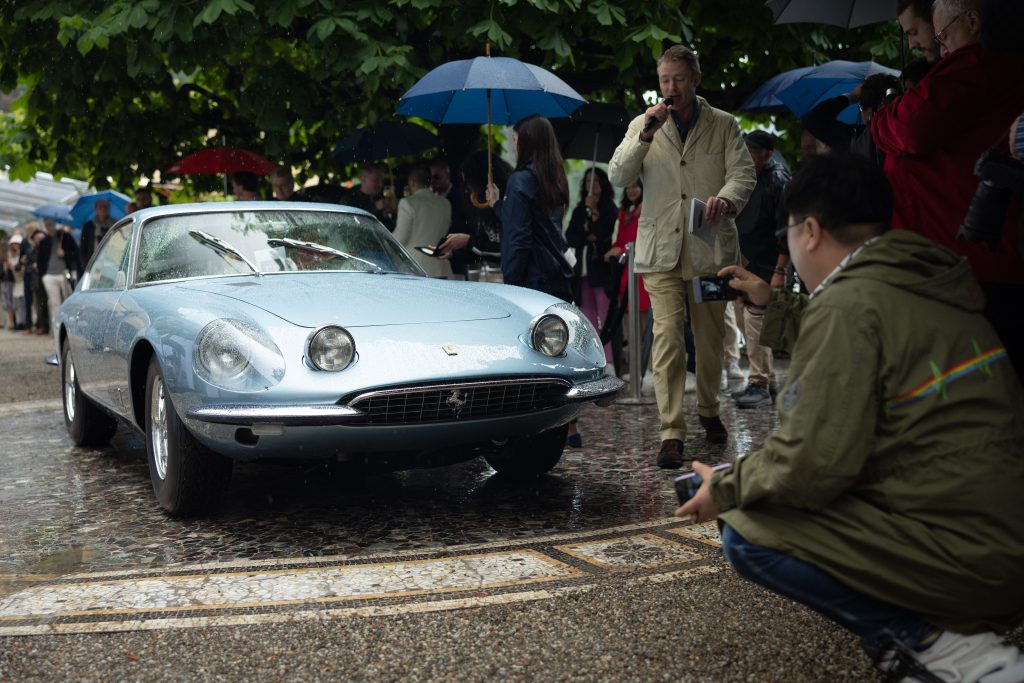
William E Heinecke’s 1967 Ferrari 330GTC Speciale took home victory in Class E – Granturismo: Experimenting With the Post-War European GT. Its first owner was an American cardiology surgeon called Michael DeBakey, who commissioned the car after visiting Maranello with Princess de Réthy and her husband, the former Belgian King Leopold II. This special body is the last of the four in this design, and was first displayed at the Salon de l’Automobile in Geneva in March 1967 before heading to the US.
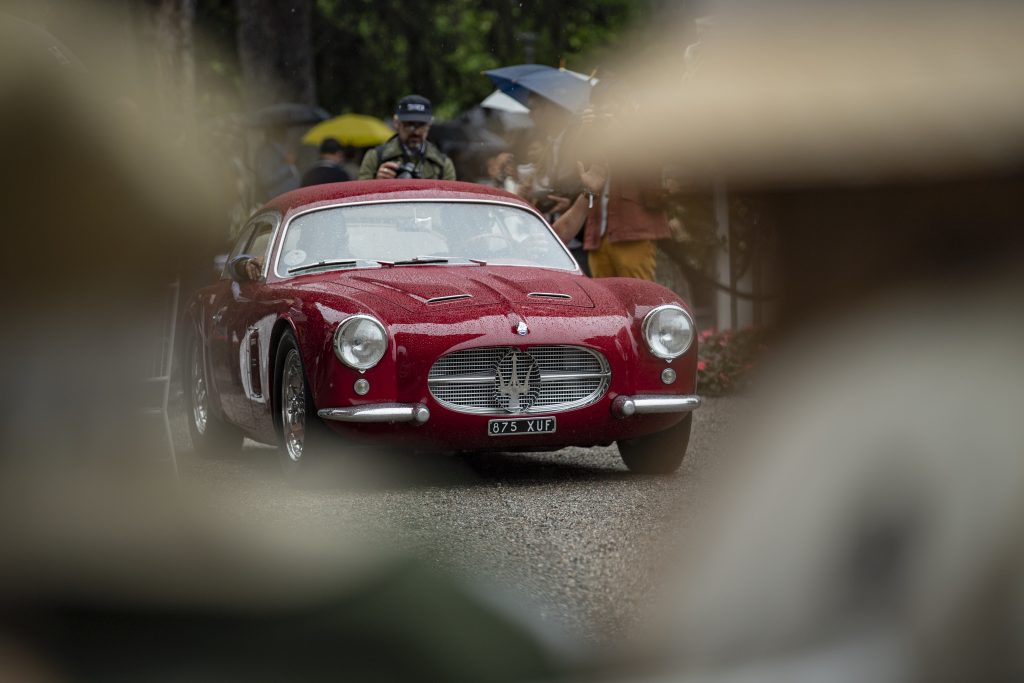
Class F, entitled ‘That Made in Italy Look: Styles Which Conquered New Worlds’, went to Jonathan and Wendy Segal’s 1956 Maserati A6G/54 Berlinetta. Chassis 2186 is the last of 21 cars bodied by Zagato, although no two cars were the same, and this one has a larger grille, extra-curvaceous rear flanks and two separate bonnet scoops, among many other unique features.
The car was originally ordered in 1956 by Charles Rezzaghi of Mille Miglia Motors Inc of San Francisco, and was raced for several years, with a colour change to silver along the way. After its racing retirement, its 2.0-litre straight-six was replaced with a Buick V8 by its next owner when the spare parts supply dried up, but a later owner was able to reverse this with the original engine. The car has also been treated to a major restoration back to this, its original colour combination.
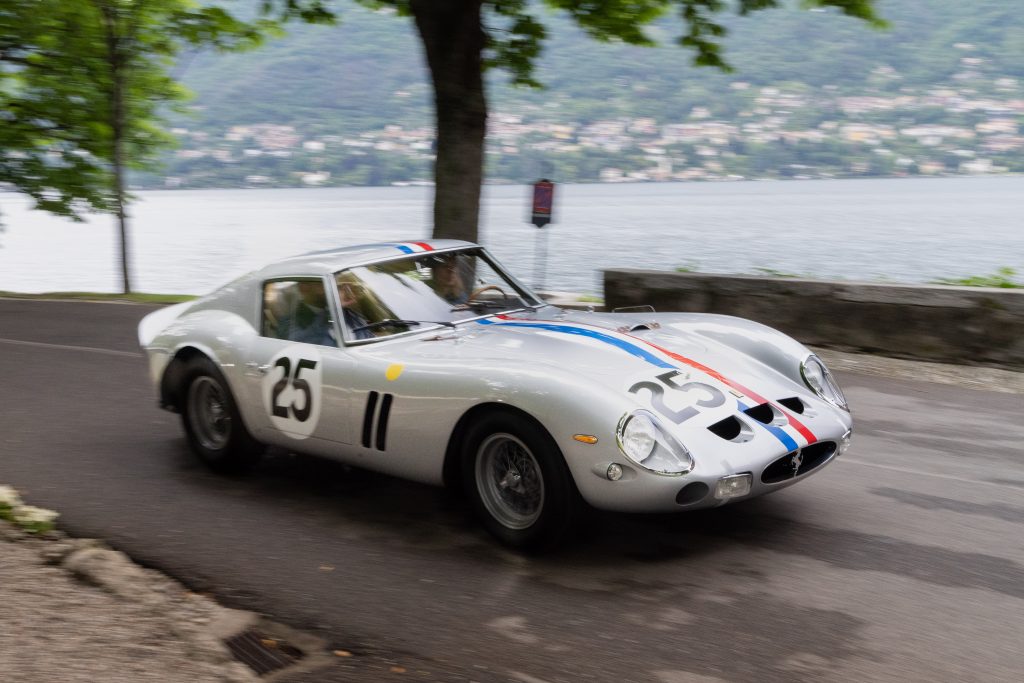
Class G, entitled A Century of the 24 Hours of Le Mans: Heroes of the Most Famous Race in the World, was won by David MacNeil’s 1962 Ferrari 250GTO – a car recently featured in Magneto. The 24th out of 36 250GTOs built, its first owner was Pierre Dumay, who took it to fourth place at the 1963 Le Mans 24 Hours; it’s recently been restored to that specification.
For more details on Concorso d’Eleganza Villa d’Este, click here. The full results are below.
Concorso d’Eleganza Villa d’Este 2023
Trofeo BMW Group (Best of Show by the Jury): 1935 Duesenberg SJ Speedster by Gurney Nutting (William Lyon).
Coppa d’Oro Villa d’Este (Best of Show by Public Referendum): 1961 Ferrari 250GT Spyder California (Keybridge Collection).
Special Awards
Concorso d’Eleganza Design Award for Concept Cars and Prototypes: 2022 Pagani Huayra Codalunga (Pagani).
Trofeo BMW Group Ragazzi (Young People’s Referendum): 1985 Ferrari 288GTO (Horst Koester).
Trofeo dei Presidenti (By President of Concorso d’Eleganza Villa d’Este/Chairman of Pebble Beach Concours d’Elegance/Chairman of Amelia Island Concours d’Elegance): 1968 Ford GT40 (Rob Walton). Also won Trofeo Auto and Design – most exciting design.
Trofeo BMW Group Classic (most sensitive restoration): 1949 Rolls-Royce Silver Wraith James Young Drophead Coupé (Yohan Poonawalla).
Trofeo Rolls-Royce (most elegant Rolls-Royce): 1928 Rolls-Royce Sports Phantom Prototype (Alexander Schaufler).
Trofeo Vranken-Pommery (best iconic car): 1963 Porsche 901 Prototype ‘Quickblau’ (Alois Ruf).
Trofeo ASI (best-preserved post-war car): 1950 Aston Martin DB2 Coupé (Stephan Hofmann).
Trofeo il Canto del Motore (best engine sound): 1970 Porsche 917 K (Christophe Count d’Ansembourg, Belgium).
Trofeo Automobile Club Como (car driven from farthest away): 1937 Alvis Speed 25 SC Two-Seater Open Tourer (James Sprague).
Class Awards
Class A: The Fast and the Formal: Pre-War High-Speed Luxury: 1933 Chrysler Custom Imperial CL Convertible Sedan by LeBaron (Jack Boyd Smith Jr)
Class B: Grande Vitesse: Pre-War Weekend Racers: 1938 Delahaye 145 Coupé Chapron (Peter and Merle Mullin).
Class C: Incredible India: The Dazzling Motoring Indulgences of the Mighty Maharajas: 1935 Duesenberg SJ Speedster (William Lyon).
Class D: Porsche at 75: Delving Into the Stuttgart Legend’s Iconic and Eccentric Back Catalogue: 1963 Porsche 901 Prototype ‘Quickblau’ (Alois Ruf).
Class E: Granturismo: Experimenting With the Post-War European GT: 1967 Ferrari 330GTC Speciale by Pininfarina (William E Heinecke).
Class F: That ‘Made In Italy’ Look: Styles Which Conquered New Worlds: 1956 Maserati A6G/54 Berlinetta Zagato (Jonathan and Wendy Segal).
Class G: A Century of the 24 Hours of Le Mans: Heroes of the Most Famous Race in the World: 1962 Ferrari 250GTO (David MacNeil).
Class H: Here Comes the Sun: Topless Done Differently: 1961 Ferrari 250GT Spyder California (Keybridge Collection)
